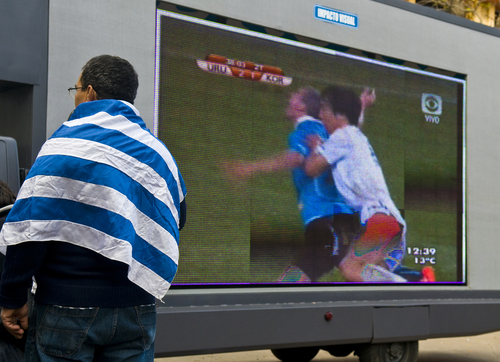
If you are looking for an HDTV you want to be sure you
take many different items into consideration such as manufacturer specifications, product reviews, return policies, etc. As one coworker reminded me today – be sure the TV you purchase has a powerful amplifier in case you don’t have a separate sound system.
You will also probably want to be sure the connectivity options you need in the future are included. Internet connectivity and even WiFi functionality may be very important to you in the next few years if not today.
This article is a good place to start when researching so be sure to bookmark it for when that important HDTV buying decision comes around. BTW, 3D HDTV looks amazing and is worth considering. But before you decide to go 3D be sure to try it in the store for 20 minutes as some people get sick from watching. It would really stink to spend an extra thousand bucks for something you can’t use due to nausea.
Here is an excerpt:
2. If they are showing animated videos, ignore them. They’re artificial images and as such, you’ll have no absolute reference to evaluate them with. The brightest and most color saturated TV will appear to be the best in these circumstances, but isn’t. The lack of an absolute reference also applies to movies such as Avatar (because the Navi are blue). It’s a great movie, but not for the evaluation of picture quality and accuracy! 3. In-store HDTVs are almost always poorly and inconsistently adjusted, so you can’t judge picture quality and color accuracy based on what you see. Even in Best Buy’s high-end Magnolia Home Theaters, the TVs are often inaccurately adjusted. A TV that doesn’t look first-class may be a misadjusted great TV, or a mediocre TV showing at its best. If the picture looks great that means it can likely do even better with your own adjustments or a professional calibration. It could also simply be the unit with the highest dealer profit margin.
4. Many retail stores still deliver video to the HDTVs using analog distribution instead of digital because it’s a lot cheaper. Analog introduces a whole other layer of issues that further complicates displayed picture quality, so it’s important to find out if the distribution is analog or digital.
5. Something to keep in mind: ambient lighting is generally bright, irregular and awful. Fluorescents are the worst; the dark is best.
6. The HDTVs are often placed at different heights, which introduces viewing angle issues which particularly affect LCDs. When evaluating an LCD be sure to stand directly in front of the center of the unit because of viewing angle issues (see below).
7. When TVs are displayed side by side, there is a natural tendency to believe that the brightest, most colorful TV with the highest image contrast is the best – a punchy picture that stands out from the crowd. A TV that is delivering an accurate picture will then appear bland. Most TVs come from the factory set to a vivid mode that exploits this psychological bias. Try to overcome that… because you won’t want that sort of picture at home.





